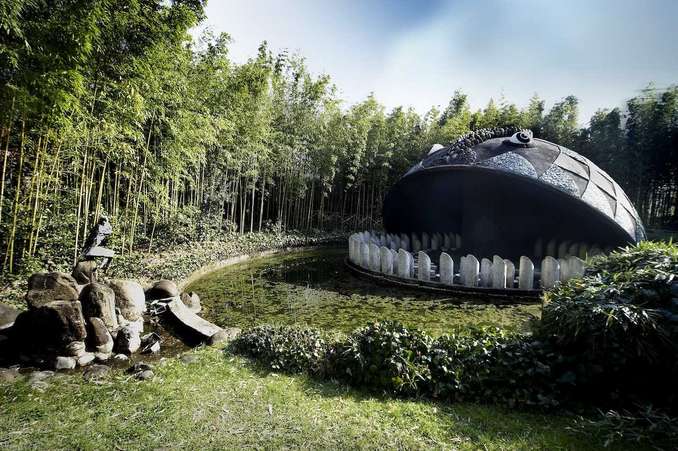
15 March 2019
Parco di Pinocchio
Collodi is famous for having provided Carlo Lorenzini with his pseudonym: it was the birthplace of his mother and the childhood haunt of the author of The Adventures of Pinocchio, the most-translated and widely printed non-religious book in the world. Collodi consists of three major elements: the hamlet, Garzoni garden and Pinocchio Park.
These offer three itineraries that blend into the Tuscan landscape and share a capacity for stretching our imagination into the realms of wonderland.
The idea of extolling Pinocchio's praises at Collodi came about in 1951 when the then mayor of Pescia, Rolando Anzilotti founded the Pinocchio Monument Committee and invited major artists to take part in a competition.
The joint winners were Emilio Greco with Pinocchio and the Fairy and Venturino Venturi with Little Square of Mosaics. In 1956 came the inauguration of the famous five-metre tall bronze group symbolically representing the metamorphosis of Pinocchio and the extraordinary mosaics depicting the main episodes of the Adventures.
These works were set in an area designed by the architects Renato Baldi and Lionello De Luigi. By 1962 Pinocchio Park had become an established cultural attraction, while the scientific activities of the Pinocchio Monument Committee had evolved and acquired importance.
At this point the Committee set up the Carlo Collodi National Foundation. In 1963 Giovanni Michelucci's Osteria del Gambero Rosso (Red Shrimp Inn) was inaugurated, containing a restaurant of the same name and an area for meetings, shows and workshops.
In 1972 an extension of the Park was built, the Land of Toys.
This whimsical route designed by Pietro Porcinai, covering over a hectare of Mediterranean scrubland, features twenty-one bronze sculptures by Pietro Consagra and buildings by the architect Marco Zanuso. The Museum-Library ''Laboratory of Words and Pictures'', conceived by Giovanni Michelucci and built in 1986 to a design by Carlo Anzilotti, is used for cultural events dedicated to the world of children.
These offer three itineraries that blend into the Tuscan landscape and share a capacity for stretching our imagination into the realms of wonderland.
The idea of extolling Pinocchio's praises at Collodi came about in 1951 when the then mayor of Pescia, Rolando Anzilotti founded the Pinocchio Monument Committee and invited major artists to take part in a competition.
The joint winners were Emilio Greco with Pinocchio and the Fairy and Venturino Venturi with Little Square of Mosaics. In 1956 came the inauguration of the famous five-metre tall bronze group symbolically representing the metamorphosis of Pinocchio and the extraordinary mosaics depicting the main episodes of the Adventures.
These works were set in an area designed by the architects Renato Baldi and Lionello De Luigi. By 1962 Pinocchio Park had become an established cultural attraction, while the scientific activities of the Pinocchio Monument Committee had evolved and acquired importance.
At this point the Committee set up the Carlo Collodi National Foundation. In 1963 Giovanni Michelucci's Osteria del Gambero Rosso (Red Shrimp Inn) was inaugurated, containing a restaurant of the same name and an area for meetings, shows and workshops.
In 1972 an extension of the Park was built, the Land of Toys.
This whimsical route designed by Pietro Porcinai, covering over a hectare of Mediterranean scrubland, features twenty-one bronze sculptures by Pietro Consagra and buildings by the architect Marco Zanuso. The Museum-Library ''Laboratory of Words and Pictures'', conceived by Giovanni Michelucci and built in 1986 to a design by Carlo Anzilotti, is used for cultural events dedicated to the world of children.
A garden must combine the poetic and the mysterious with a feeling of serenity and joy.- Luis Barragan - |






